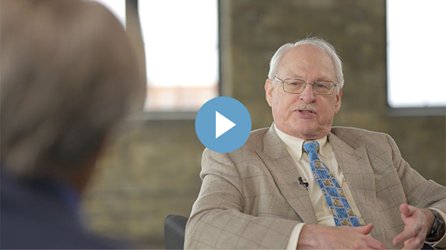The Creation of Automated Audiometry
This entry to the GSI Blog is a reaction to the second video in the Closing the Audiology Gap series, which features two of our most beloved key opinion leaders, Robert Margolis, PhD and James W. Hall III, PhD. Dr. Margolis and Dr. Hall have been influential in the audiology profession for decades. They both were professors, saw patients in their university clinics, and are both very dedicated to hearing healthcare. It was informative to have them sit down in the same room and talk about some of the challenges that are facing the profession, as well as the future of audiology.
The second video in this series focuses on the creation of automated audiometry for audiologists. One of the things that I found to be most interesting is that Dr. Margolis had been thinking about automating pure tones for decades. From his early work at University of Iowa in a research lab, he realized that the rules of pure tone testing could be automated and the rules surrounding it could be followed by a computer.
Audiometry is a relatively simple technical task that is reasonably easy to automate. However, Dr. Margolis realized that in order to make automated audiometry useful for clinical audiologists, there needs to be a method for evaluating the behaviors during testing. He solved this issue by implementing Quality Indicators. After additional research, he was able to narrow down measurable behaviors that had a statistically significant effect on the validity of automated audiometry. Behaviors such as how long it takes to respond, false alarms, test-retest, and a quality check contribute to the overall accuracy of the pure tone audiometry results and are measured and displayed with each test.
Both Dr. Hall and Dr. Margolis believe that audiologists must use their time wisely and in a way that benefits the patient. Using a tool that provides basic diagnostic data is a logical step in the evolution of audiology. Not only will the implementation of automated audiometry improve efficiency in the clinic, it will also increase access to hearing healthcare services.
I would encourage everyone to watch this video to learn about the research behind AMTAS and the benefits of implementing automation into current practices. You can view the second episode of the Closing the Audiology Gap video series below. Additionally, you can see the entire series by visiting the Closing the Audiology Gap page.

Laura Prigge, AuD is the Manager of Clinical Education and Training at GSI. Laura received her Doctorate of Audiology degree from AT Still University, a Master's of Arts in Audiology from UCONN and a Bachelor's of Science degree in Communication Disorders from Western Illinois University. Laura’s 20+ years of experience includes providing manufacturing support for a leading hearing aid manufacturer as well as technical audiology training and support for an international audiologic equipment company. Prior to that, she managed education and training at another hearing aid manufacturer and conducted audiologic evaluations on children, adults, and geriatric patients at a retail hearing center.